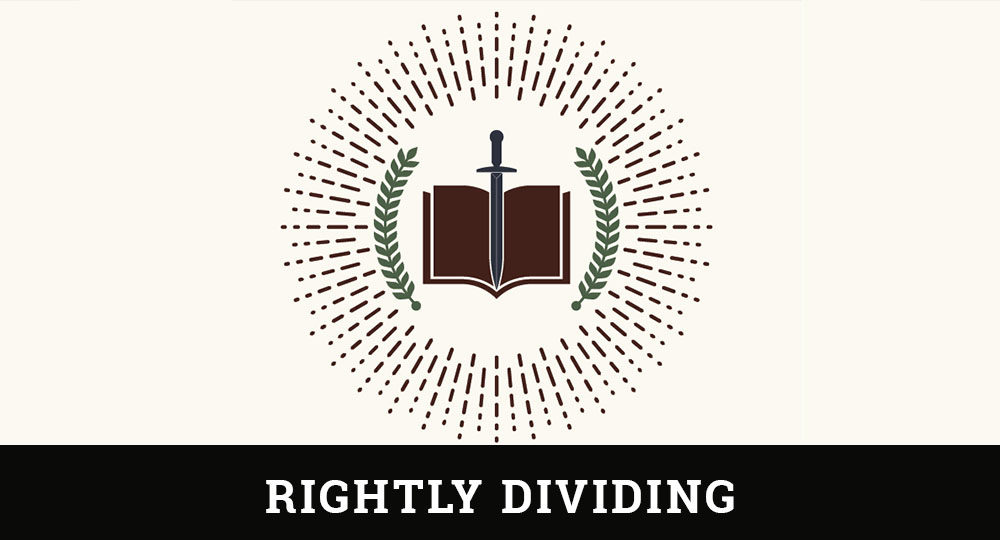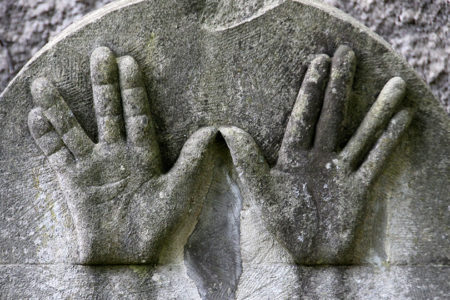Introduction: The Second Epistle to the Thessalonians
2 Thessalonians 1:1–2
One of the apostle Paul’s earliest ministries was in the city of Thessalonica. Because his heart was to “the Jew first” (Rom. 1:16), he preached the gospel first in the city’s synagogue, spending three Sabbaths presenting Jesus as Messiah. His work resulted in the establishment of a church (Acts 17:1–4). However, persecution arose immediately, forcing Paul and his coworker Silas to flee to Berea (v. 10).
Unable to return and disciple the infant believers, Paul sent Timothy in his place. He also sent a letter filled with teaching and encouragement. In 1 Thessalonians, Paul taught the new church about salvation, sanctification, service, suffering, election, God’s coming wrath on the unsaved, living a pure life, the Rapture, the Antichrist, apostasy, obedience to leadership, disciplining the unruly, supporting and encouraging the weak, the Day of the Lord, prayer, and Christ’s Second Coming.
Knowing it was necessary to follow up, Paul wrote a second letter to further inform the Thessalonians about the Day of the Lord, a subject about which many were perplexed.
Specifics On The Letter
Apprehension. What caused the confusion concerning the Day of the Lord? False teachers in Thessalonica had forged a letter in Paul’s name stating believers were living in the Tribulation. (If a forged letter was sent, it did not survive because no portions of it have ever been discovered.)
The news alarmed the church. If the Day of the Lord had arrived, these saints had missed the Rapture and would suffer God’s wrath. This teaching, however, contradicted what Paul had written in his first epistle to the Thessalonians, namely, that the church would be raptured before the Day of the Lord (1 Th. 1:10; 4:13–18; 5:9–10). Therefore, Paul’s second letter was intended to calm this young church’s fears, correct any contradictions concerning Paul’s earlier teachings, and clear up any misunderstanding on the subject.
Second Thessalonians teaches that two events must precede the Day of the Lord: the “falling away [apostasy],” followed by the revelation of the man of sin, the Antichrist (2 Th. 2:3). The church will not be on Earth when these events take place, so no Christian will be subject to God’s wrath.
Author. Twice Paul identified himself as the author: “Paul…to the church of the Thessalonians” (1:1) and “The salutation of Paul with my own hand, which is a sign in every epistle; so I write” (3:17). The early church fathers all agreed Paul wrote the epistle. It was not until the 19th century that modern critics cast doubt on Paul’s authorship. However, they have not satisfactorily proven their claims.
Although the letter is undated, certain historical events indicate Paul wrote it a few months after writing 1 Thessalonians. After fleeing Thessalonica, Paul traveled to Berea (Acts 17:10–15) and Athens (vv. 16–34), finally arriving in Corinth where he ministered for 18 months (18:11). Paul wrote this epistle in Corinth when Gallio was proconsul there (v. 12). He probably arrived in AD 50 and composed 2 Thessalonians in AD 50 or early 51.
Aim. Paul had many reasons for penning this epistle. First, he wanted to praise the Thessalonians for their spiritual growth, resolute faith in Christ, and love for one another. Second, he hoped to encourage them for their steadfastness under persecution and assure them Christ would reward them when He returned.
Third, and most important, Paul needed to correct the error concerning the Day of the Lord. He wanted to outline and explain events that will take place during the Day of the Lord and tell the church how to discipline problem believers whose conduct dishonored the Lord.
Summary Of The Letter
This letter is extremely important. It addresses major themes that greatly concerned the Thessalonians in that day and still concern the church worldwide today.
Chapter 1 presents God as the Father who cares for and protects believers. Paul praised the church for its patience and faith amid severe persecution and assured the Thessalonians God will judge all who persecuted them when He returns to Earth and will reward all who remained faithful.
Chapter 2 addresses the doctrinal error that had severely shaken these believers. Paul clearly stated the Day of the Lord will not come until “the falling away” (apostasy) occurs and the “man of sin [Antichrist] is revealed” (2 Th. 2:3). These events had not happened (nor have they yet) because the “restrainer” is suppressing evil on the earth (v. 7).
When He is removed, the Antichrist will be free to unleash wickedness on the earth as never seen in human history. During the Tribulation, he will utterly deceive the unsaved who have no love for the truth. They will receive a strong delusion, believe the Antichrist’s lie, and perish without hope. At Christ’s Second Coming, He will destroy the Antichrist with the spirit of His mouth and brightness of His coming.
The concluding paragraph breaks out in praise, thanking God for choosing, calling, and converting the Thessalonians through the sanctification of the Holy Spirit. It then commands these believers to remain steadfastly committed to the faith and asks God the Father to comfort them.
Chapter 3 asks the Thessalonians to pray (1) for Paul as he preaches the Word, that the Word might spread swiftly and bring glory to God; and (2) that Paul and his coworkers be delivered from unreasonable, unsaved, wicked men.
In the middle of this request, Paul assured believers the Lord is faithful to establish them in persecution and to protect them from the evil one (Satan). He expressed confidence that they were doing as instructed and would continue to practice what he and Timothy had taught them as they served Christ.
His prayer was that they obey God out of love for Him, which would help them endure persecution. Their example was Christ, who persevered patiently through His trials and remained obedient in His commitment to God His Father.
The remaining verses of chapter 3 discuss how to deal with disorderly church members (vv. 6–15). Paul then closed the epistle as he had opened it, praying that God’s peace and grace would be upon them.
Salutation Of The Letter
Paul’s salutation resembles that of 1 Thessalonians: “Paul, Silvanus, and Timothy, to the church of the Thessalonians in God our Father and the Lord Jesus Christ: Grace to you and peace from God our Father and the Lord Jesus Christ” (2 Th. 1:1–2; cf. 1 Th. 1:1–2).
The three men helped establish the church, and their names would immediately have grabbed the Thessalonians’ attention. The men also were together in Corinth when Paul wrote the epistle (Acts 18:5).
Paul always called his coworker “Silvanus” (proper Roman name), not “Silas,” as Luke did in Acts. Silvanus is mentioned second because Paul chose Silvanus to accompany him on his second missionary journey (15:22, 40). A Jewish man with a Roman name, Silvanus was a Roman citizen (16:37).
Paul mentioned Timothy because Timothy worked closely with the Thessalonian church. Although he was not with Paul and Silvanus when they planted the church, Paul sent Timothy there soon after (1 Th. 3:1–2, 6). Timothy was Paul’s son in the faith whom he personally discipled.
Interestingly, Paul never referred to himself as an apostle in this epistle, as he did in others. He spoke to the Thessalonian Christians on a personal level because he was their spiritual father, and his character and conduct convinced them to heed his instruction and teachings.
Paul addressed the “church of the Thessalonians.” The word church (Greek, ekklesia) consists of two Greek words: ek (out of) and kaleo (to call). It was used in Greek culture to denote any group or assembly and carried no religious connotation. In Scripture, the word church refers to a Christian assembly of people who believe in Jesus Christ. It never refers to a building. Throughout this epistle, the word refers only to a local assembly, not to the universal church.
The phrase God our Father and the Lord Jesus Christ (2 Th. 1:1) clarifies whom Paul, Silvanus, and Timothy worshiped and distinguishes the church from pagan religions and political groups of that day. Mentioning “the Lord Jesus Christ” identifies the church as Christian, rather than Jewish.
This church included many Gentiles who became believers and a number of Jewish people, such as Jason. (See Acts 17.) Salvation in Christ gave Gentiles and Jews equal social standing and a new relationship in life, love, and communion with one another—something no other religion could do.
Paul’s greeting, “Grace to you and peace,” was common (1 Th. 1:1). But under the inspiration of God, the words grace and peace became invested with new meaning, expressing the truth of the gospel.
Grace (v. 2) can be defined as an attribute of God, a part of His character, which expresses His goodness to undeserving, sinful humanity. Peace (v. 2) enters our lives when we are born again and yield to the control of the Holy Spirit, who gives us a calmness of spirit and sense of well-being because we have been reconciled to God through Jesus Christ.
In future articles, we’ll see that this book provides a treasure trove of prophetic insights yet to be fulfilled.








